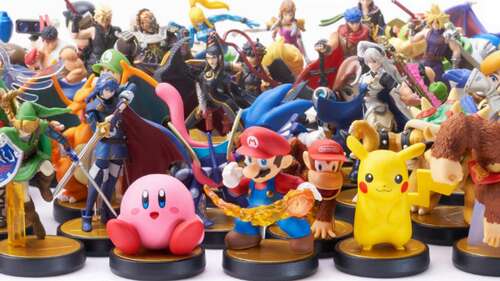
Many toys-to-life games utilize figures, but they don’t utilize action figures — action being the keyword. What’s the difference? You can pose action figures, but toys-to-life figures are generally static plastic statuettes, occasionally with NFC electronics inside them. Granted, plenty of normal toys sport electronic features, but these are generally lights and sounds. It took a video game company to figure out how to put NFC hardware into action figures.
PlayFusion’s Lightseekers was a short-lived series of figures designed in conjunction with a mobile dungeon crawler RPG, “Lightseekers Awakening.” The goal was novel as far as toys-to-life went: Poseable action figures that could link to a video game and serve as both memory cards and controllers. We’re talking seven inches tall, multiple joints, colorful paint jobs, lights and sounds, and optional weapons (each sold separately).
The magic behind Lightseekers was the “FusionCore.” This removable device can be plugged into the back of each figure and can differentiate between characters and accessories. Slotting the FusionCore into figures unlocked them in the game, and swapping weapons was handled by inserting them into the toy’s hands. This tech ran on the same premise as Ubisoft’s “Starlink: Battle For Atlas” toys-to-life game while also predating it.
Unfortunately, the Lightseekers line didn’t last long. PlayFusion only produced four figures and 14 accessories (eight weapons, two shields, and four jetpacks) before canceling future plans. The company also produced a series of physical trading cards, many of which could produce augmented reality effects, as well as a digital version of that game.
On the bright side, the failure of Lightseekers didn’t hit PlayFusion too hard. The company is still making video games, albeit ones that don’t ask players to buy action figures.

